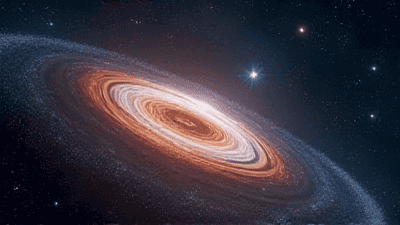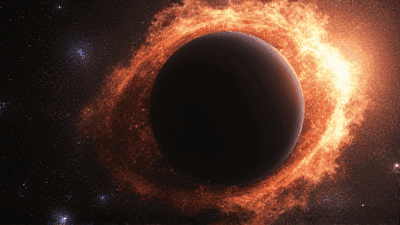
Black holes are among the most enigmatic and fascinating objects in the universe. Often depicted in science fiction as mysterious gateways to other dimensions or as the ultimate cosmic vacuum cleaners, black holes have captured the imagination of scientists and the general public alike.
What is a Black Hole?
Defining Black Holes
At its core, a black hole is an area in space where gravity is so strong that nothing, not even light, can escape its pull. The gravitational force of a black hole arises from a massive amount of matter compacted into a small region, creating what is known as the event horizon. Beyond this boundary, the escape velocity exceeds the speed of light, making it impossible for any information or matter to return.
Types of Black Holes
Black holes can be classified into several categories based on their mass:
-
Stellar Black Holes: These black holes form from the remnants of massive stars that have undergone supernova explosions. When a massive star exhausts its nuclear fuel, gravitational collapse occurs, leading to the formation of a stellar black hole. They typically have masses ranging from about three times to several tens of solar masses.
-
Supermassive Black Holes: Found at the centers of most galaxies, including our Milky Way, supermassive black holes can have masses ranging from millions to billions of times that of our Sun. Their formation processes remain an area of active research, but they are believed to have grown over billions of years through the accretion of matter and the merger of smaller black holes.
-
Intermediate Black Holes: These black holes are thought to exist in a mass range between stellar and supermassive black holes, typically hundreds to thousands of solar masses. Evidence for their existence is still being gathered, and they may reveal important insights into the formation of supermassive black holes.
-
Primordial Black Holes: Hypothetical in nature, primordial black holes could have formed in the early universe moments after the Big Bang. Their masses could vary widely, and they remain a topic of theoretical investigation.
The Formation of Black Holes
Stellar Evolution and Supernovae
The life cycle of a star plays a crucial role in the formation of black holes. For stars with a mass greater than approximately 20 times that of the Sun, the process culminates in a supernova explosion. When nuclear fusion within the star ceases, the outward pressure that supports the star against gravity is lost, leading to a collapse.
During this collapse, the core of the star becomes incredibly dense, compacting matter into a very small volume. If the core's mass surpasses the Tolman-Oppenheimer-Volkoff limit (approximately three solar masses), it continues to collapse into a black hole. The outer layers of the star are expelled in a supernova blast, creating elements that will eventually form new stars and planets.
Accretion and Growth of Supermassive Black Holes
Supermassive black holes are believed to form through mechanisms such as the merging of smaller black holes and the gravitational collapse of dense gas clouds in the early universe. As matter spirals into a black hole, it forms an accretion disk—a rotating disk of gas and dust that emits enormous amounts of energy in the form of X-rays and other radiation. This intense energy output allows astronomers to detect and study supermassive black holes, even when they are situated billions of light-years away.
The Mysteries of Black Holes
Event Horizon and Singularity
The event horizon is perhaps the most intriguing feature of a black hole. It represents the point of no return; once anything crosses this boundary, it cannot escape the black hole’s gravitational pull. Beyond the event horizon lies the singularity—a point where the gravitational field becomes infinitely strong, and the laws of physics as we understand them break down. Understanding the nature of the singularity remains one of the greatest challenges in modern physics.
Time Dilation and Gravitational Effects
Black holes also challenge our understanding of time and space. According to Einstein’s theory of general relativity, the intense gravitational field of a black hole warps the fabric of spacetime. As an object approaches the event horizon, time appears to slow down relative to a distant observer. This effect, known as time dilation, suggests that for an observer falling into a black hole, time continues normally; however, they would perceive the outside universe as accelerating away from them.

Observing Black Holes
Detecting Black Holes
Despite being invisible, black holes can be detected indirectly through their interactions with surrounding matter. Several methods utilized by astronomers include:
-
Gravitational Effects: The gravitational influence of a black hole can be observed on nearby stars and gas clouds. By studying the orbits of these objects, astronomers can infer the presence of a black hole and estimate its mass.
-
X-Ray Emissions: When matter falls into a black hole, it forms an accretion disk that heats up due to friction and gravitational forces. This accelerated matter emits X-rays, allowing astronomers to detect black holes that are actively consuming material.
-
Gravitational Waves: The collision and merger of black holes generate ripples in spacetime called gravitational waves. LIGO and Virgo are sensitive observatories designed to detect these waves, providing a new way to observe black hole mergers and learn about their properties.
The Event Horizon Telescope
In 2019, the Event Horizon Telescope (EHT) collaboration made history by capturing the first-ever image of a black hole's event horizon. This monumental achievement involved linking telescopes around the world to create a virtual Earth-sized observatory. The image showed the shadow of the supermassive black hole at the center of the galaxy M87, providing a powerful demonstration of the existence of black holes and the technology’s potential for future discoveries.
Theoretical Implications and Research
Quantum Physics and Information Paradox
The study of black holes raises fundamental questions about the nature of space, time, and information. One major issue is the black hole information paradox, which concerns the fate of information that falls into a black hole. According to quantum mechanics, information cannot be destroyed; however, if information is lost when objects enter a black hole, it challenges our understanding of fundamental physical laws.
Physicists like Stephen Hawking proposed that black holes could emit radiation, known as Hawking radiation, allowing information to escape over incredibly long timescales. The ongoing exploration of this paradox combines elements of quantum physics and general relativity, pushing the boundaries of theoretical research.
Multiverse Theories and Black Holes
Some theoretical models suggest that black holes could serve as gateways to other universes within a hypothetical multiverse. This concept, while highly speculative, raises intriguing questions about the nature of reality and could pave the way for new avenues of research in cosmology and theoretical physics.
Popularizing Science: Bridging the Gap
The Importance of Science Communication
The complexities of black holes and their implications for our understanding of the universe often make them difficult to comprehend for the general public. Science popularization plays a crucial role in breaking down these complex ideas into accessible formats that resonate with diverse audiences.
Engaging the Public
Engaging storytelling, accessible explanations, and captivating visuals can make the science of black holes relatable and intriguing. Welcoming public interest in such topics encourages curiosity and promotes scientific literacy, empowering individuals to understand and appreciate the wonders of the cosmos.
Utilizing Media and Technology
The rise of media platforms, including documentaries, podcasts, and online courses, has transformed how science is communicated. Programs like "Cosmos" and informative YouTube channels have successfully introduced audiences to the mysteries of black holes, inspiring a new generation of scientists and enthusiasts.
Outreach and Education
Educational initiatives aimed at promoting interest in astrophysics are essential. Workshops, science festivals, and partnerships with schools can inspire young minds to delve into the world of astronomy and encourage careers in science, technology, engineering, and mathematics (STEM).
The Future of Black Hole Research
Advanced Observatories and Technologies
As technology continues to advance, future observatories will enhance our ability to study black holes. Upcoming missions, such as the James Webb Space Telescope (JWST), will provide unparalleled insights into the formation and evolution of black holes, paving the way for transformative discoveries.
Global Collaborations
International collaborations in astrophysics bring together researchers from diverse backgrounds and cultures, fostering innovation and addressing complex questions related to black holes. By sharing knowledge, resources, and expertise, scientists can collectively work toward a deeper understanding of these cosmic phenomena.
Conclusion
Black holes remain among the most extraordinary and challenging objects in the universe, offering profound insights into the nature of gravity, time, and the cosmos itself. As we continue to explore their mysteries, the importance of science popularization cannot be overstated. By making the science of black holes accessible and engaging, we can inspire future generations to explore the wonders of the universe, cultivate curiosity, and further our understanding of the cosmos.
The journey to unravel the secrets of black holes is just beginning, and with continued research and collaboration, we may uncover even more of the universe's hidden truths. Black holes are not merely cosmic vacuum cleaners; they are gateways to understanding the fabric of reality itself, inviting us to journey to the very edge of space and time.



